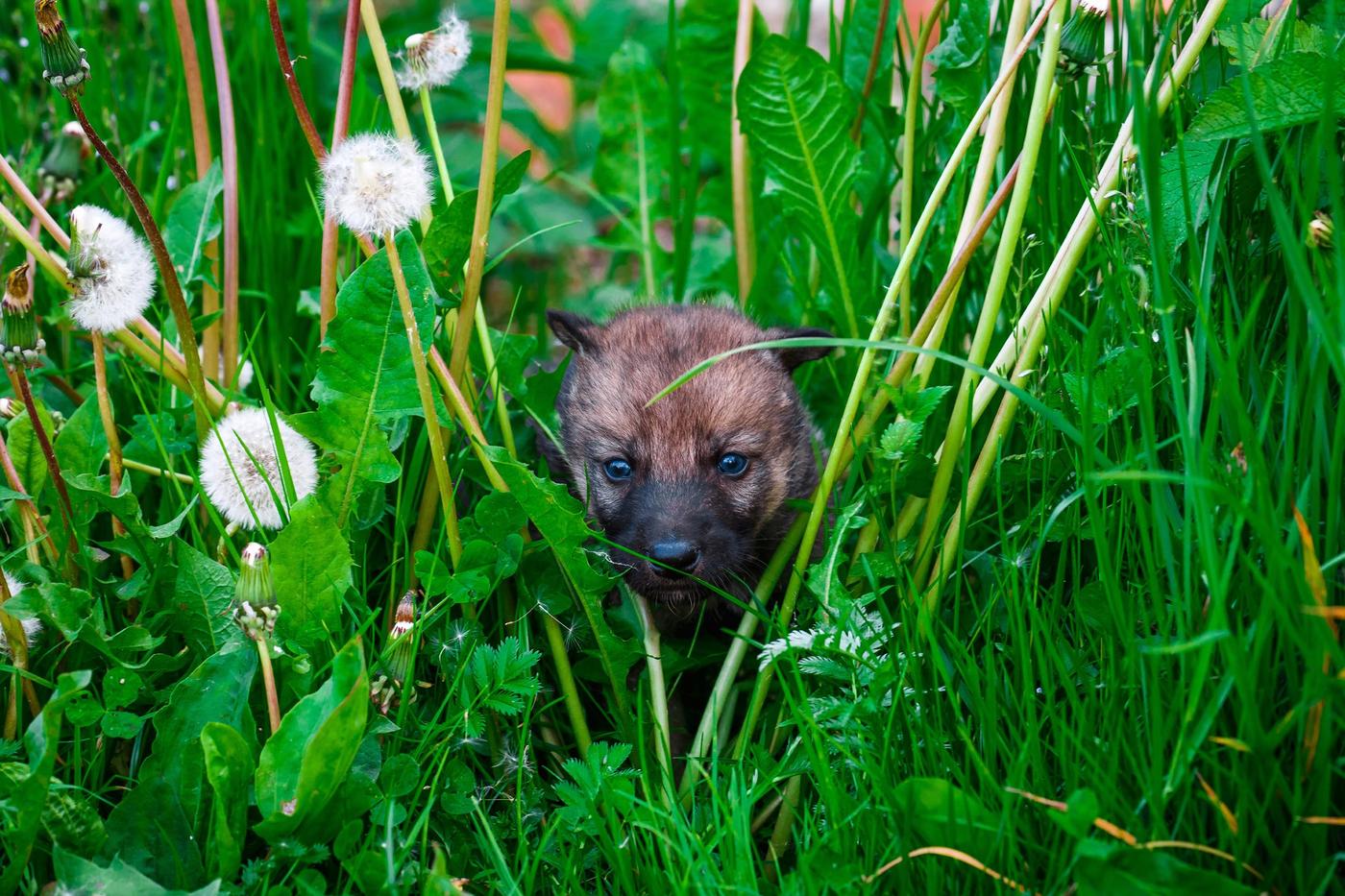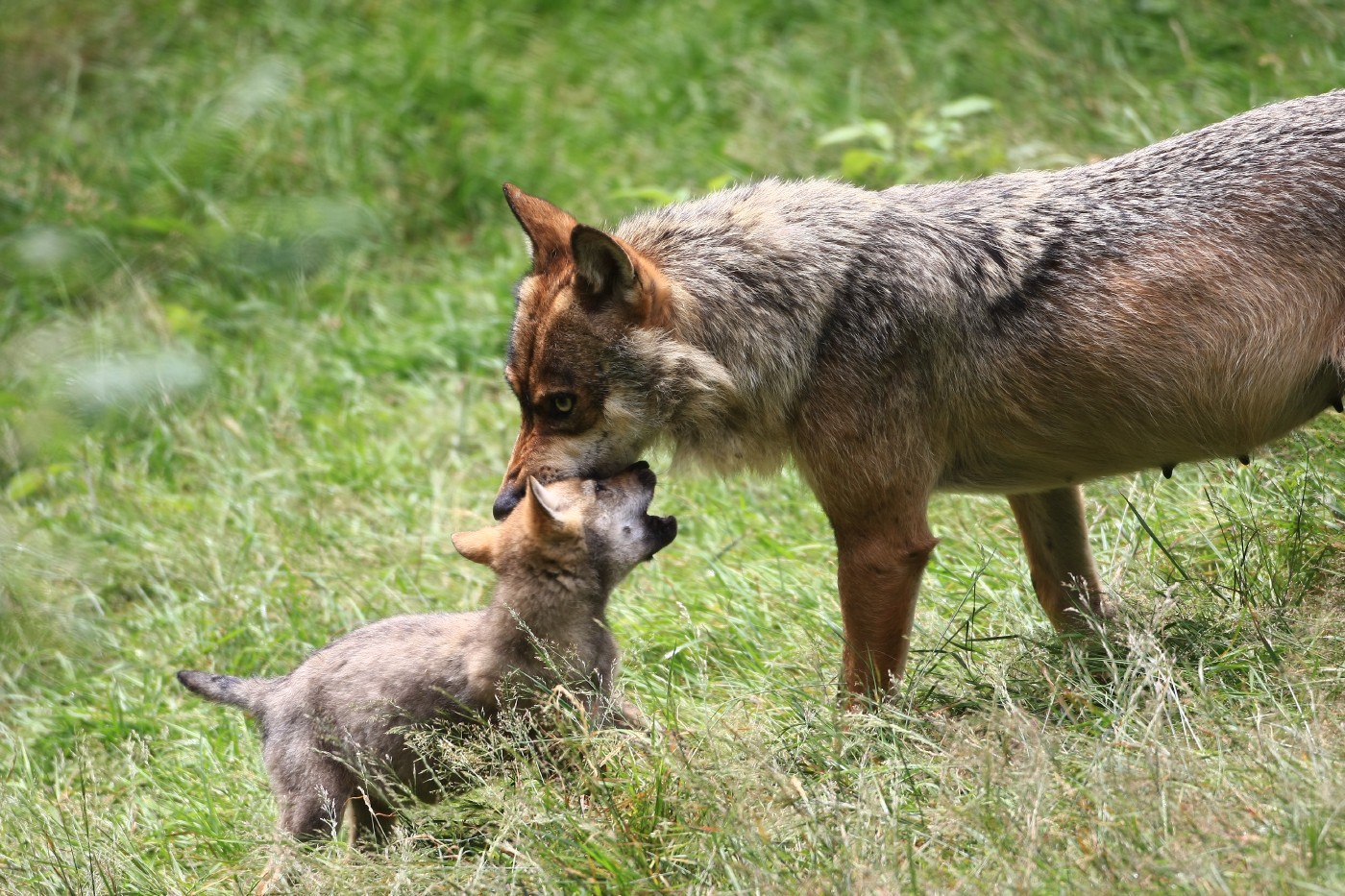
Where do wolves live?

The wolf was once widespread throughout Europe. However, in large parts of its original range, particularly in Western and Central Europe, the species was eradicated by humans. Thanks to intensified conservation efforts as well as a hunting ban, populations in some European countries have been recovering for a number of years - for example, in Italy, Poland and Croatia. Since the end of the 1990s, the wolf has also become re-established in Germany. Initially originating in the East, the wolf has now become indigenous in almost all of Germany's federal states.
Wolves are very adaptable animals and they are found in the most diverse of regions and habitats. Most wolves live in forests because, for centuries, they were persecuted and pushed back into less accessible areas. In order for wolves to become established in a region, they need an adequate supply of water and prey as well as quiet places where they can rear their young.
Wolf characteristics
Wolves are the ancestors of our domestic dogs. In some breeds, such as sheepdogs or huskies, the similarities are clear to see. In contrast to wolf-like domestic dogs, wolves have a longer body as well as being longer in the leg. Wolves can attain a body length of 100 to 150 centimetres, a shoulder height of 60 to 90 centimetres and a weight of 30 to 70 kilos, although females are generally smaller and lighter than their male counterparts.

Sabina Nowak from our partner organisation Wilk surveying wolf tracks in the snow.
© WilkWolves’ markings are quite varied. In temperate regions of Europe, their fur is predominantly dark grey to brown in colour. An adult wolf’s typical paw print is 8 to 10 centimetres long. The animal’s claws are clearly visible, and this enables the tracks of a wolf to be distinguished from those of a lynx, for example. Unlike felines, wolves cannot retract their claws.
Wolves can live to a similar age as dogs - around 10 to 12 years. Premature death in wolves can occur for a number of different reasons. In addition to the diseases that also inflict dogs, such as distemper or rabies, road traffic in particular is a life-threatening hazard for wolves.
Impressions from the life of wolves
(To open the photo gallery, please click on one of the pictures.)
What do wolves eat?
Depending on the time of year as well as the wolf’s habitat, the composition of its food varies considerably. In winter, large herbivorous mammals form its main prey, for example, moose and reindeer in Northern Europe or deer, stags and wild boar in more southerly habitats. The wolf hunts mainly older, sick or young animals, as these make for easy prey. In doing so, the wolf is playing an important role in the ecosystem, for example, by keeping populations of hoofed animals in check.
In summer, smaller mammals, birds, fish, amphibians and even fruit also form part of the animal’s diet. Near human settlements, wolves can also prey on sheep and young cattle. Electric fences and livestock guardian dogs can help to combat this. When prey is scarce, wolves will also eat carrion and rubbish.
Reproduction and social behaviour of wolves

Wolf cub in the tall grass of a meadow
© depositphotos/zarevvIn Central Europe, the wolves' mating season, also known as the rutting season, is from January to March. Wolf cubs are born between April and June. A litter normally consists of four to six, but no more than eleven cubs. These are usually born in a burrow which the female wolf will either dig herself or take over from other animals such as foxes, enlarging it as necessary.
The newborn cubs weigh just 300 to 500 grams, are blind and deaf and have a fine, dark coat. The mother suckles her offspring for six to eight weeks, and from around the twentieth day, the young wolves are able to eat solid food. At eight months, the young animals are fully grown. However, it is only from the age of two, once they have reached sexual maturity, that they leave the pack to look for their own mates and establish new wolf packs. Until then, the young adults live with their parents in the pack and help to rear their younger siblings.
Are wolves endangered?
On the whole, wolf populations in Europe have been recovering for several years. Nevertheless, these large predators are still not readily accepted by many people. And, whilst wolves are now protected by law in most European countries, the animals are often too hastily shot if there is a conflict with the interests of livestock farmers and hunters. The wolf is also under threat from the fragmentation of its habitat, particularly in densely populated Central Europe. Young wolves that leave the pack cover up to 1,000 kilometres when they migrate and quite a few of them are run over by vehicles in the process.
In Europe, the wolf is protected by the Washington Convention on International Trade in Endangered Species of Wild Fauna and Flora, the Bern Convention and the EU Directive on the Conservation of Natural Habitats and of Wild Fauna and Flora. Nevertheless, some European countries have hunting quotas for wolves.











